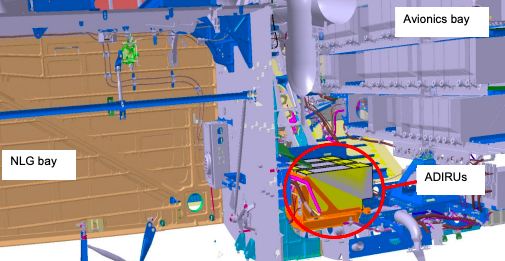Airbus A319-131 Autopilot and AutoThrust Disconnect During Edinburgh to Heathrow Flight

Multiple inertial reference systems drift, during climb from Edinburgh Airport, August 6, 2021, as found in an AAIB (Air Accidents Investigation Branch) investigation of the Airbus A319-131, G-DBCF.
During an Airbus A319-131 flight from Edinburgh Airport to London Heathrow, the autopilot and autothrust disconnected. After several minutes the flight crew was able to re-engage them, but they disconnected again during the approach. The aircraft landed safely.
The autopilot and autothrust disconnects of the Airbus A319-131 were caused by severe drift of the aircraft’s Inertial Reference System due to vertical shock loads transferred into the system during the takeoff roll. The source of the shock loading was an uneven repair patch on the runway. The nose landing gear shock absorber was found to be over extended, leading to transfer of vertical shock forces into the airframe.
The aircraft manufacturer had investigated previous similar events and published guidance to maintenance organisations but had not published information to flight crew.
Content and image source/credit: AAIB, “AAIB investigation to Airbus A319-131, G-DBCF,” June 16, 2022.
Become trained in troubleshooting and identifying root causes of issues and incidents.
REGISTER TODAY for a TapRooT® course and gain advantage, experience, and expertise from our professional instructors. Here are listings for our upcoming 2-Day and 5-Day courses:
2-DAY TAPROOT® ROOT CAUSE ANALYSIS TRAINING
5-DAY TAPROOT® ADVANCED ROOT CAUSE ANALYSIS TEAM LEADER TRAINING
We are global to meet your needs. If you need other times or locations, please see our full selection of COURSES.
If you would like for us to teach a course at your workplace, please REACH OUT HERE to discuss what we can do for you, or call us at 865.539.2139.



